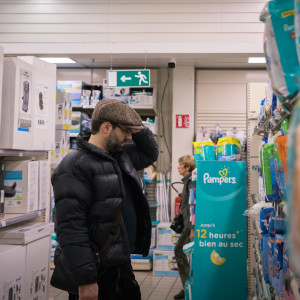At eCommerce Expo & Tech for Marketing online event, Smartling’s Head of Marketing Adrian Cohn and Lucid’s International Marketing Manager Eliana Cameira talk about how to scale global growth through localization, best practices to help improve localization through translation, and more.
Here are four key takeaways:
- Humanize your brand: treat users as unique individuals
- Leverage data & qualitative research to uncover key localization insights
- Focus on the full-funnel experience
- Collaborate with translators from the get-go

Scaling Global Growth
When approaching scaling global growth, we like to think about, “What does growth look like for companies that truly invest in localization?”
First, companies like those drive growth by localizing the full funnel experience. This means understanding your customers’ motivation and cultural nuances, tailoring content appropriately to those insights, and connecting personally with them end to end – from the point your customers first reach your website to when they are using your products. The goal is to ensure that the customer’s experience is consistent throughout the entire customer life cycle and in their native language.
Localizing full funnel experience also means tailoring SEO strategy for each market. Customize your SEO strategy for each market by incorporating locally relevant head terms in content and creating a unique content experience using colloquial phrases and idioms specific to your target markets. Investing in local marketing experts will help identify key market insights for what to localize and how to market the localized content.
And rather than just translating the English content and merely replicating it into another language, first understand your target personas in each of your key markets and search behavior, identifying unique pieces of content specific to these audiences. Of course, it doesn’t mean you shouldn’t translate your English content. Instead, take advantage of content localized from English, but make tweaks in order to tailor it to your target personas.
And finally, share strong data points with internal stakeholders to help increase cross-collaboration with other teams and get buy-in for some of the globalization and localization efforts to invest in further.
Building Personal Connections with Localization
Personalization refers to a unique experience, and localization is a component of this that takes an extra step. Localization recognizes that consumers have distinct values, cultures, and preferences shaped by geographical regions and creates unique experiences for targeted locales.
Nothing speaks louder than brands that connect directly with customers and speak their native language! But thinking globally while maintaining local relevance can be quite challenging when you have a small team to tackle this.
However, localizing and personalizing the content and user experience should be your goal from the get-go, knowing that this will help enhance your competitive advantage in global markets. Collaborating with a translation management company could also help scale local content creation globally and efficiently.
Best Practices to help improve localization through translation
- Share global growth and marketing strategies with your translation management provider, setting clear goals and expectations with regards to localization.
- Collaborate with translators as much as possible: help them get more familiar with your products and industry, and provide relevant terms that can help with your SEO strategy. They can incorporate this in the translation process.
- Get a local insight (whether in-house or externally) about your target markets. And if possible, listen to your users to get feedback on the user and product experience.
- Think about the full funnel experience. From start to finish, what works well and what needs improvement for your content such as landing pages, pricing page, checkout, in-product, support, etc.?
- Embrace a growth mindset: test small, pivot, test again, and scale what you see as wins.
Your international audience won’t relate to content that doesn’t feel authentic and relevant to them. Localization ensures that users have a seamless and positive experience navigating your brand.
Whenever possible, dedicate resources to tailoring content for each language and audience and execute a targeted SEO strategy.
Want to learn more? Download the Modern Marketer’s Guide to Global Content Creation










